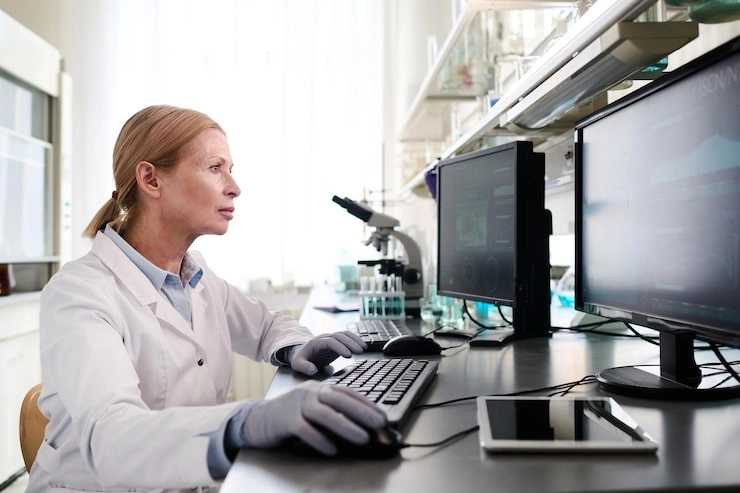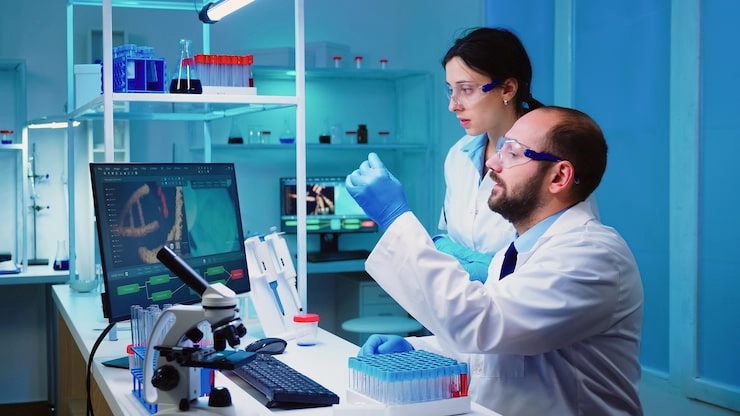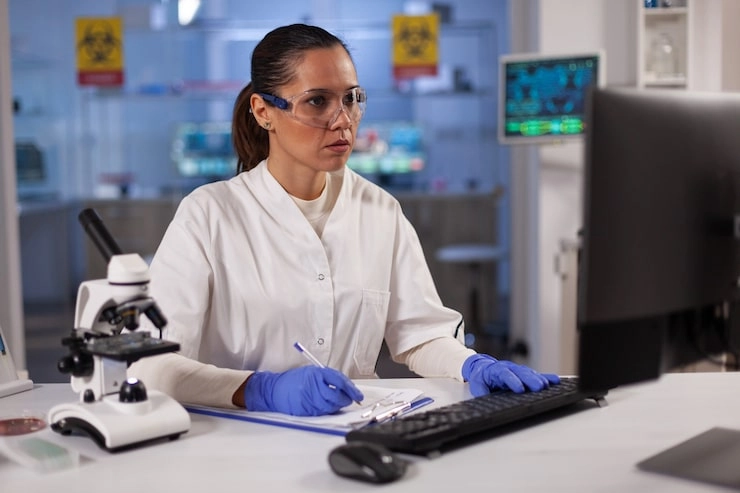
Gas chromatography is a key analytical tool. It is an important technique used to separate and analyze compounds that can be turned into vapor without breaking down. In this method, a vaporized sample is put into a chromatographic column. Then, an inert carrier gas moves it through a stationary phase. This technique is found everywhere in environmental testing, pharmaceuticals, food safety, and petrochemical industries because it has great sensitivity and sharp resolution capabilities.
To get precise and repeatable results in gas chromatography (GC), the amount of liquid sample injected is extremely important. This is a big deal. This article explores why the liquid sample size has to be kept tiny during GC analysis and how it impacts performance across all of the system’s parts.
Importance of Sample Size in Gas Chromatography
The injection volume has a direct impact on how well the GC system works. It affects everything. This includes the injection port all the way to the detector. First of all, understanding the consequences of injecting large volumes is critical for keeping your analysis accurate and your instrument running for a long time.
Role of Sample Size in Injection Port Performance
The injection port is the gateway. It’s where the sample first gets into the GC system. A special microsyringe is used to add a sample volume, usually just a few microliters, through a rubber septum and into the vaporization chamber. What’s more, if you add too much liquid, it can completely flood this chamber. This causes bad vaporization and makes the sample delivery inconsistent.
Small sample sizes are best. They allow for quick and total vaporization, which helps keep the injection pressure and temperature steady. Most separations only need a tiny bit of the original sample. For this reason, a sample splitter is used to send any extra sample to waste. This clever step prevents the system from getting overloaded and makes sure the analytes are efficiently moved to the column without any loss or hold-ups.
Impact on Column Efficiency and Separation Quality
The GC column is the heart of the operation. It’s central to separating different analytes based on their physical and chemical traits. Overloading this column with big sample volumes can seriously diminish separation efficiency. When the stationary phase—the thin liquid coating inside the column—gets saturated, peaks start to blend together, which tanks the resolution.
By keeping the sample volume small, chromatographic peaks stay sharp and symmetrical. This greatly improves both qualitative and quantitative work.
Influence on Detector Response and Accuracy
Detectors in GC systems are very sensitive. They are built to work within specific dynamic ranges. Injecting large sample volumes can completely overwhelm these detectors. This saturation messes with the signal processing that creates the chromatogram, leading to wrong calculations of concentration and other properties.
Small, controlled injection volumes ensure the detector response stays within its linear range, which boosts accuracy. Besides, they also lead to better reproducibility over many runs since the variation caused by volume differences is much smaller.
Sample Introduction Techniques in Gas Chromatography
Using the right sample introduction methods is fundamental for good data quality and instrument performance. These methods are picked based on how concentrated the analyte is, the complexity of the matrix, and the desired sensitivity.
Types of Injection Methods Used in GC
There are three main ways to inject a liquid sample:
- Split Injection: This is perfect for samples with high analyte concentrations. Only a little bit of the sample gets into the column, and the rest is vented.
- Splitless Injection: This is used for trace analysis where you need the whole sample to enter the column. Thus, it demands careful control of the injection volume.
- On-Column Injection: The entire sample is put directly onto the column. This technique requires amazing precision and the smallest possible volume to avoid overloading.
Each method is useful. But each one requires you to stick to the best injection volumes to keep the system from degrading.
Best Practices for Liquid Sample Injection
To get consistent and accurate results, follow these tips:
- Always use high-precision microsyringes made just for gas chromatography.
- You should precondition the injector to match the solvent’s volatility. This helps prevent condensation inside the inlet.
- Employ proper septum piercing techniques. This is so that you can maintain the system’s pressure integrity and stop leaks.
By following these practices, labs can get much more reproducible results. And they can also protect sensitive parts from contamination or thermal stress.
Consequences of Oversized Liquid Injections in GC Systems
It might seem like a good idea to inject larger volumes for better sensitivity. But this approach can backfire badly. It can have serious effects on both the equipment and the data itself.
Physical and Chemical Effects on Instrumentation
Large liquid injections put too much solvent into the system, which might not vaporize completely. This leads to condensation in cool zones. This can create ghost peaks or carryover in your next analyses.
Additionally, oversized injections can cause thermal stress or contamination in key parts like inlet liners, septa, and columns. These problems mean you’ll be doing maintenance more often, and you might face some expensive replacements.
Data Quality Issues Resulting from Large Sample Volumes
Analytical accuracy takes a nosedive when too much sample goes into the column. Peak tailing or fronting might happen because of uneven vaporization or chemical interactions with an overloaded stationary phase. It also becomes more likely that compounds will co-elute, which really complicates interpretation.
Moreover, detectors like a flame ionization detector (FID) or a mass spectrometer can get saturated. This leads to nonlinear responses or even a total signal cutoff, which undermines both qualitative identification and quantitative measurement.
Benefits of Maintaining Optimal Sample Volume in GC Analysis
Sticking to the right injection volume guidelines provides many benefits. These advantages range from better analytical performance to long-term operational savings.
Improved Analytical Performance and Reproducibility
Smaller samples greatly cut down on run-to-run variability. Your method becomes more robust because fewer variables are messing with the analyte separation. Furthermore, low-volume injections reduce the background noise from extra solvents, which improves signal-to-noise ratios and detection sensitivity.
Extended Instrument Lifespan and Reduced Maintenance Costs
Smaller volumes mean less gunk builds up across system components. This is a huge plus. It cuts down on how often you need to clean things and makes parts like septa and columns last much longer. As this buildup decreases over time, your chromatographic performance stays consistent with fewer breakdowns or repairs.
PERSEE: A Trusted Manufacturer of Analytical Instruments
When you’re picking dependable tools for gas chromatography analysis, the quality of the instrument is a massive factor.
Overview of PERSEE’s Gas Chromatography Solutions
Perseguir offers some truly solid GC solutions designed for accuracy and a long life. The Cromatógrafo de gases G5 supports high-resolution separation for even complex mixtures.
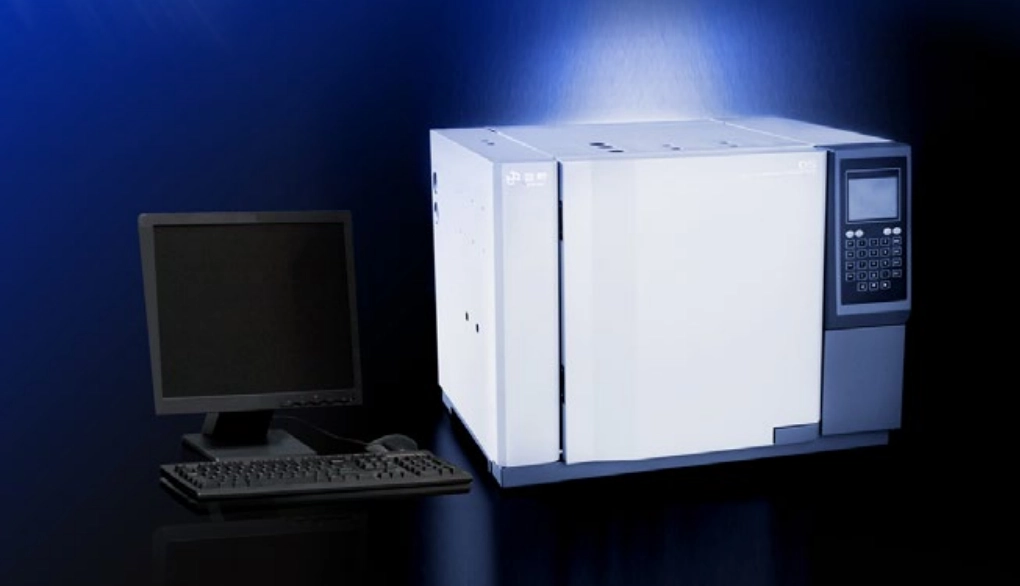
For labs that need automation, the M7 Series integrates smart software controls that boost precision during liquid injections. These systems are used all over in environmental testing, pharmaceuticals, food safety, and petrochemicals.
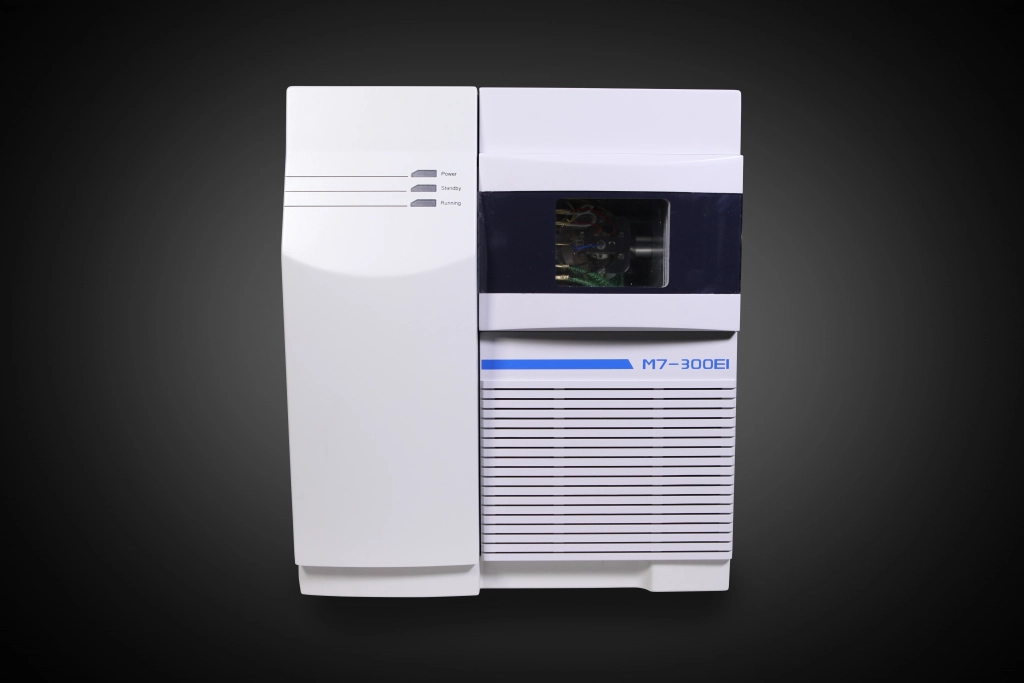
Commitment to Quality and Innovation
With decades of experience in analytical instruments, PERSEE doesn’t just provide top-tier GC systems. They also offer technical support, helpful training resources, and custom options made for client needs. Their dedication ensures you get high performance with every single analysis while making lab workflows as efficient as possible.
Summary of Key Points
Why Small Sample Size Matters in GC
Keeping a small injection volume in gas chromatography is absolutely vital for several reasons:
- It guarantees complete vaporization without flooding system parts.
- It protects columns and detectors from being damaged or contaminated.
- It boosts reproducibility, accuracy, and sensitivity while cutting down on maintenance.
Following the best practices for injection size is a must for generating reliable chromatographic data in any field—from environmental monitoring to pharmaceutical development.
FAQs:
Q1: What happens if I inject too much liquid into a gas chromatograph?
A: If you inject too much liquid, you can easily overload the column or saturate the detector. This leads to messy separation, warped peaks, and just plain wrong results. It can also cause thermal stress or contamination inside critical parts like the inlet liners or septa.
Q2: How do I determine the correct injection volume for my GC analysis?
A: The perfect volume depends on your system’s setup (for instance, split or splitless mode) and how concentrated your analyte is. However, it typically is between 0.1 µL and 2 µL for most standard uses. You should check your instrument manual or method development guide for the best parameters.
Q3: Can using a small injection volume affect sensitivity?
A: Not always. When it’s properly optimized with techniques like splitless injection or pre-concentration steps, small volumes can still deliver fantastic sensitivity. And you won’t have to sacrifice your accuracy or reproducibility to get it.


